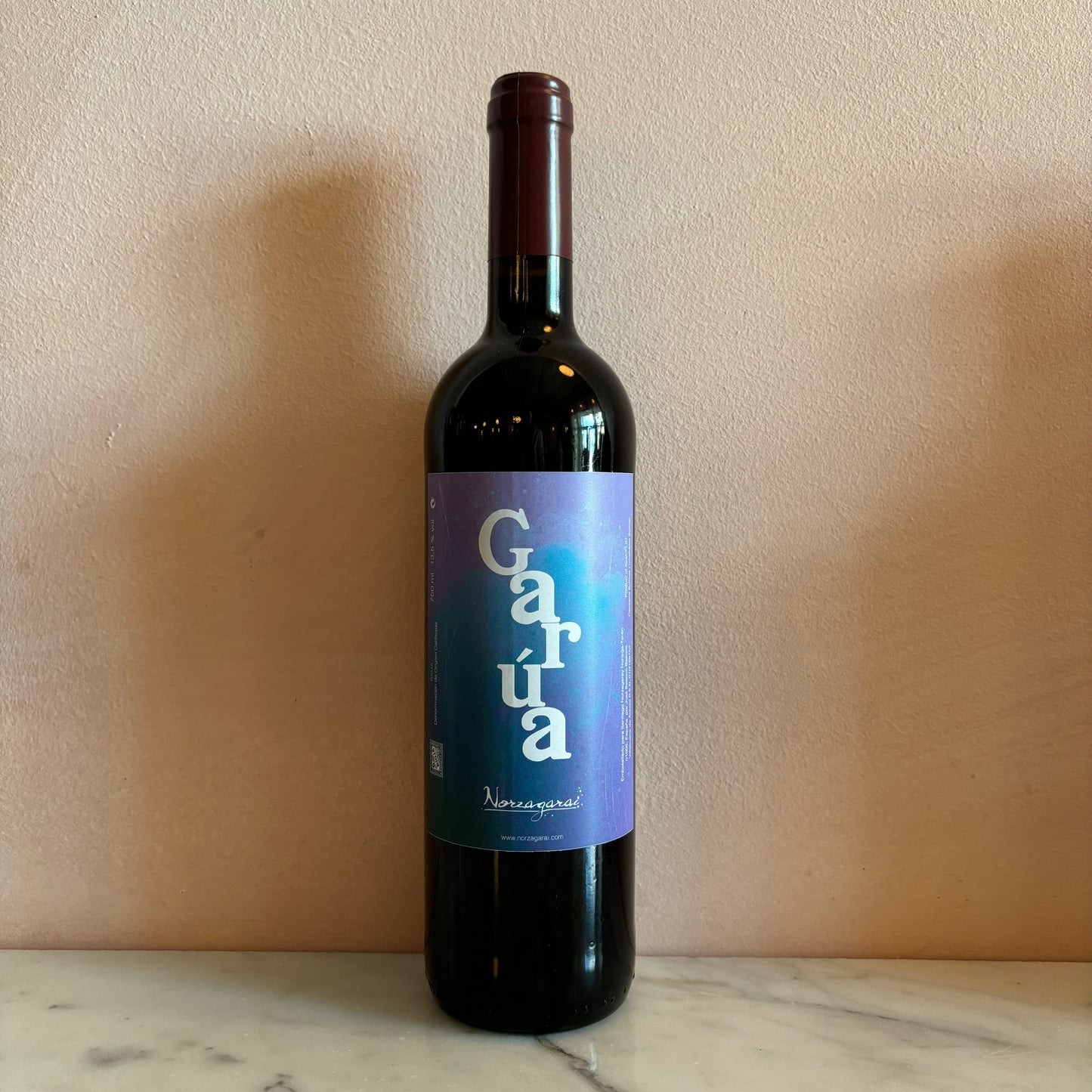Vinos Norzagarai
Vinos Norzagarai "Garúa" Tinto, Rioja, Spain 2023
Vinos Norzagarai "Garúa" Tinto, Rioja, Spain 2023
Low stock
Couldn't load pickup availability
FROM SELECTION MASSALE:
THE WINE: Garúa 2021: Carbonic maceration Tempranillo . Quite a tradition here in Rioja Alavesa, I make CM in Beaujolais style in CO2 saturated closed stainless steel tank, not in the typical open cement vats of Rioja. It’s pressed at ‘dryness’ but since there are plenty of whole bunches at this point, fermentation does pick up and go on for a couple of days longer. Then I just leave it to undergo malolactic fermentation slowly in the winery’s basement at lowish temperatures to have some of that CO2 dissolved into the wine. Then it’s lightly filtered and bottled around April-June. I normally make this wine upon request for those interested in an easy drinking young wine out of the younger parcels I tend, those that are in conversion to organic and some bought grapes.
THE PRODUCER: Santiago Norzagarai is a Rioja producer making wines unlike any others in the region. Many things set him apart. First of all, he is from Buenos Aires, though he has lived in Spain for 25 years. Secondly, he is working in the Rioja Alavesa with organic vineyards. Thirdly, he is making non-oaky, not-overly-extracted, meant-to-be-drinkable wines with a “non-interventionist approach.” In other words, Norzagarai is trying to change the stylistic perception of wines in Rioja.
Norzagarai spoke to us recently on a video call about honoring the terroir of Rioja Alavesa and making wines that reflect more than just new oak:
“Every single vineyard is facing in a different direction–it has its own microclimate. It’s own soil profile, not compositions. The soil in Rioja Alavesa is all clay-limestone. But in terms of soil structure, we really have all sorts of aspects around here and I’m inclined to showcase that, rather than the Rioja gran riserva, etc. Rioja started as an appellation for the French to make wine when they got phylloxera. The French came down here because they found potential, not because there were crianzas, reservas, and gran reservas. I reckon the potential is mostly in this area. This is where there is the wine profile I am aiming at…We do lots of carbonic maceration wines here. When they’re well-made, they tend to go really well with local cuisine. There’s something to be explored there in that sense. The bold Rioja wines we were told we should be making with heavy oak, etc., this is certainly not the way for me.”


